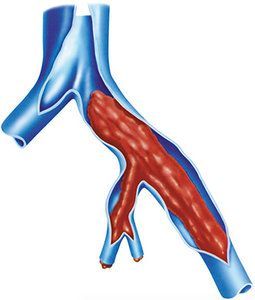Recent laws in New Jersey and California represent a disturbing trend that will negatively impact a practice’s ability to collect monies from patients, as well as expose them to significant penalties if the practice does not follow the mandatory guidelines to a T. Please be aware that a similar law may be coming to your state. The time to act is before the law is passed.
DVT: Know the Signs and You Could Save a Life
I lost a friend several months ago. He died from a pulmonary embolism (PE) secondary to a deep-vein thrombosis (DVT) that originated in his lower leg. Bobby was in his mid-60s, soft-spoken and had a big heart. He was also obese, had a terrible diet and was out of shape. These factors placed a strain on his heart and circulatory system, all of which are risk factors for DVT formation.
Bobby had driven home to see family for Thanksgiving. The trip usually takes 13 hours by car, but Bobby made the trip in just over 11 hours. On the Sunday following Thanksgiving, he began to have trouble breathing and became dizzy when he stood up. He sought help in an emergency room and was diagnosed as being dehydrated, given IV fluids and told not to travel again until he was rehydrated and could stand without experiencing dizziness.
The Tuesday after the ER visit, Bobby woke with labored breathing and asked a family member to call the emergency medical system. He slumped over and died while the call was being placed.
Deep-Vein Thrombosis: Risk Factors and Signs

DVTs form in the lower extremities when blood pools and clots due to prolonged inactivity. Movement is important in lower extremity circulation. The contraction of leg muscles helps pump blood back to the heart. Without muscular contraction, blood flow can stagnate.
DVTs are a serious problem and can easily lead to death if not detected early and proper treatment initiated. The combination of DVTs and PEs is currently the third leading cause of cardiovascular-related deaths in the U.S., resulting in 100,000 deaths annually.1-2
Table 1 lists clinical circumstances and signs associated with the Wells Score System for DVT probability. Each risk factor has been assigned a value. The sum of the factors relates to the probability of developing a DVT.3 Note that the scale lists paralysis, paresis, being bedridden and immobilization of the lower extremities as factors. All of these factors relate to prolonged inactivity. The same risks are present for traveling long distances with little or no activity during the trip, the same situation described in the story above.
Table 1: The Wells Score System For Dvt Probability
Doctors must be aware of the clinical circumstances of DVT and PE for the sake of all patients. The importance of movement as a deterrent for both conditions and for a patient's overall health cannot be stressed enough. All patients must be encouraged to get up and move to the best of their ability, and all doctors must be able to identify DVT and PE in the clinical environment. References
December 2016
Trending
Personal Injury / Legal
Jeff Randolph, Esq.;
Michael Coates
With estimates showing over 30 million Americans affected by peripheral neuropathy – and a significant portion underdiagnosed – it’s increasingly likely that chiropractors are already treating these patients. What’s missing is structured recognition, comprehensive management and targeted tools to slow progression, improve function and support systemic health.
Christopher Proulx, DC, PhD(ABD), CSCS
Billing / Fees / Insurance
Each year, ICD-10-CM is updated on Oct. 1. For 2026, there are 74,179 total codes, with 487 additions, 28 deletions and 38 revisions. Code changes are based on date of service, not the claim submission date. Services performed on/after Oct. 1 must use the new codes. While no changes affect the common spinal or extraspinal codes most frequently used by DCs, several updates may still affect your claims – particularly for comorbidities, referred pain, or trauma cases. | Digital Exclusive
Samuel A. Collins
|



